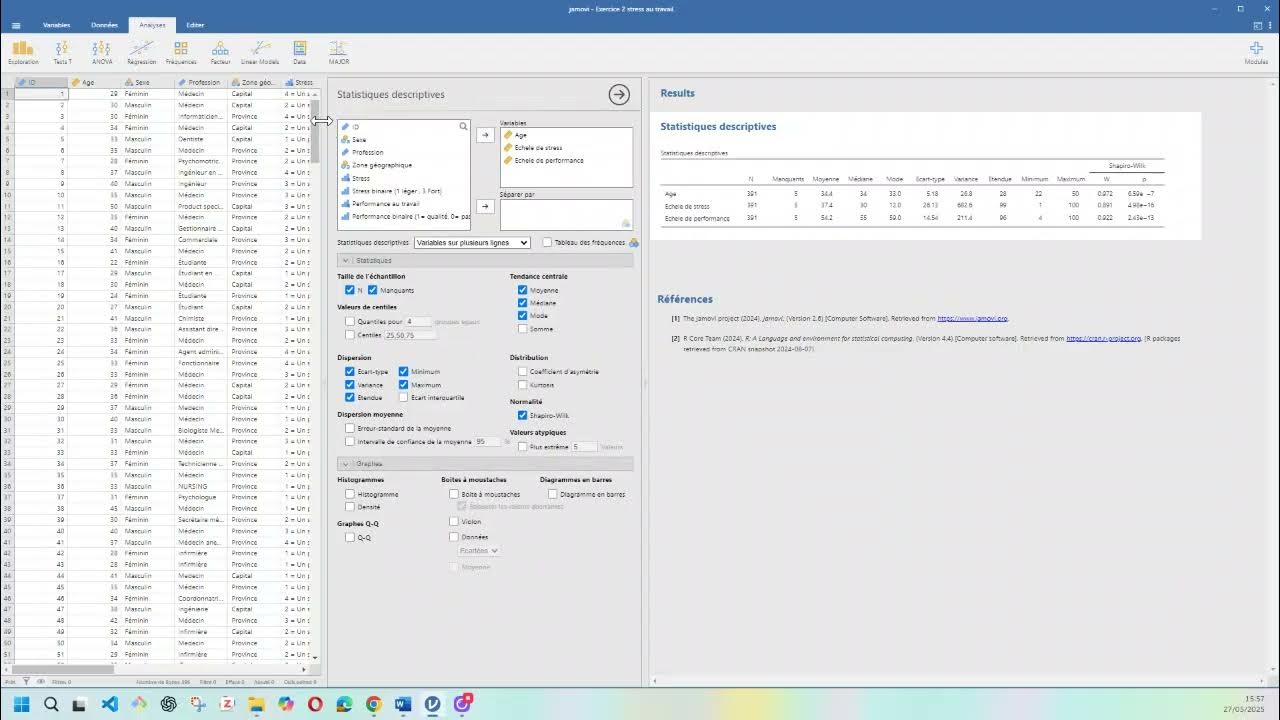Reading minds through body language | Lynne Franklin | TEDxNaperville
Summary
TLDRL'oratrice Lynne Franklin explique comment interpréter le langage corporel pour comprendre les préférences cognitives des gens : les 'regardeurs', les 'écouteurs' et les 'touchers'. Elle conseille de s'adapter à leur style pour établir un lien et augmenter sa说服力, tout en utilisant des exemples et des exercices pour démontrer comment identifier et interagir avec chaque type.
Takeaways
- 🧠 Les gens pensent de trois manières différentes selon leur style de traitement de l'information, ce qui se reflète dans leur langage corporel.
- 👀 Les 'lookers', qui représentent 75% des gens, pensent en images et se caractérisent par une bonne posture, un soin de l'apparence et un contact visuel soutenu.
- 👂 Les 'listeners', 20% des gens, pensent en mots et sons, ont tendance à regarder vers le bas et à gauche, et préfèrent un contact visuel intermittent.
- 🤲 Les 'touchers', 5% des gens, pensent en termes de sentiments et de sensations tactiles, se caractérisent par des lèvres épaisses et une tendance à se rapprocher physiquement.
- 🗣️ Pour établir du lien avec les 'lookers', utilisez un langage visuel et maintenez un contact visuel soutenu.
- 👂 Pour établir du lien avec les 'listeners', utilisez un langage auditif et accordez un contact visuel intermittent.
- 🤲 Pour établir du lien avec les 'touchers', acceptez leur contact physique si vous êtes à l'aise, et utilisez un langage basé sur les sentiments et la texture.
- 🤔 Pour déterminer votre propre style, rappelez-vous une mémoire importante et notez si vous vous rappelez des images, des sons ou des sentiments.
- 🔍 Vous pouvez déterminer le style de quelqu'un d'autre en observant leur langage corporel ou en écoutant les mots qu'ils utilisent.
- 💡 En adaptant votre langage et votre comportement corporel en fonction du style de la personne avec laquelle vous interagissez, vous pouvez créer du lien et être plus persuasif.
Q & A
Quel est le but principal de Lynne Franklin dans son discours?
-Le but principal de Lynne Franklin est de montrer comment lire la body language des gens pour comprendre comment leur cerveau fonctionne et ainsi améliorer la communication et la persuasion.
Quelle est la première étape que Lynne suggère pour comprendre le style de pensée d'une personne?
-La première étape suggérée est d'observer la body language de la personne pour identifier si elle est un 'looker', un 'listener' ou un 'toucher'.
Quelle est la proportion de la population que représente James, le 'looker'?
-James, qui représente les 'lookers', correspond à 75% de la population mondiale.
Quels sont les signes de body language qui indiquent que quelqu'un est un 'looker'?
-Les signes de body language qui indiquent un 'looker' incluent une bonne posture, une apparence soignée, des rides au front, des lèvres minces et un regard soutenu.
Comment les 'lookers' réagissent-ils au langage visuel dans la communication?
-Les 'lookers' réagissent positivement au langage visuel et apprécient les expressions telles que 'I see what you mean' ou 'Let's picture this'.
Quelle est la proportion de la population que représente Marge, la 'listener'?
-Marge, qui représente les 'listeners', correspond à 20% de la population mondiale.
Quels sont les signes de body language qui indiquent que quelqu'un est un 'listener'?
-Les signes de body language qui indiquent un 'listener' incluent un léger désintérêt pour l'apparence, un regard vers le bas et à gauche, une tendance à poser la tête sur la main et à marmonner.
Comment les 'listeners' réagissent-ils au langage auditif dans la communication?
-Les 'listeners' réagissent positivement au langage auditif et apprécient les expressions telles que 'That sounds good to me' ou 'Let's talk this over'.
Quelle est la proportion de la population que représente Marina, la 'toucher'?
-Marina, qui représente les 'touchers', correspond à 5% de la population mondiale.
Quels sont les signes de body language qui indiquent que quelqu'un est un 'toucher'?
-Les signes de body language qui indiquent un 'toucher' incluent une tendance à s'approcher physiquement, des lèvres épaisses, et un regard vers le bas pour se rappeler des sentiments.
Comment les 'touchers' réagissent-ils au langage basé sur les sentiments dans la communication?
-Les 'touchers' réagissent positivement au langage basé sur les sentiments et apprécient les expressions telles que 'I want to hear how you're feeling about this' ou 'Reach out and tell me what you think'.
Quelle est la leçon clé que Lynne Franklin encourage les gens à pratiquer après avoir identifié leur propre style de pensée?
-La leçon clé est d'observer attentivement la body language et le langage des autres pour identifier leur style de pensée et ajuster sa communication en conséquence pour bâtir du rapport et être plus persuasif.
Outlines

Cette section est réservée aux utilisateurs payants. Améliorez votre compte pour accéder à cette section.
Améliorer maintenantMindmap

Cette section est réservée aux utilisateurs payants. Améliorez votre compte pour accéder à cette section.
Améliorer maintenantKeywords

Cette section est réservée aux utilisateurs payants. Améliorez votre compte pour accéder à cette section.
Améliorer maintenantHighlights

Cette section est réservée aux utilisateurs payants. Améliorez votre compte pour accéder à cette section.
Améliorer maintenantTranscripts

Cette section est réservée aux utilisateurs payants. Améliorez votre compte pour accéder à cette section.
Améliorer maintenantVoir Plus de Vidéos Connexes

Analyse descriptive des variables quantitatives

19. Le test d'indépendance du chi2 (khi2)

How do QR codes work? Can you make a fake one?

What is Stylistics?: Meaning, Definition, Explanation, Purpose and Major Branches

Forex trading for Beginners, Candlesticks trading Part1 / Forex trading in Kenya

Why She Stopped Finding You Attractive

🚴♂️ Les Blabla de Simon | Freiner Change Tout : L’Effet de Frein en VTT vulgarisé ! 🔧
5.0 / 5 (0 votes)